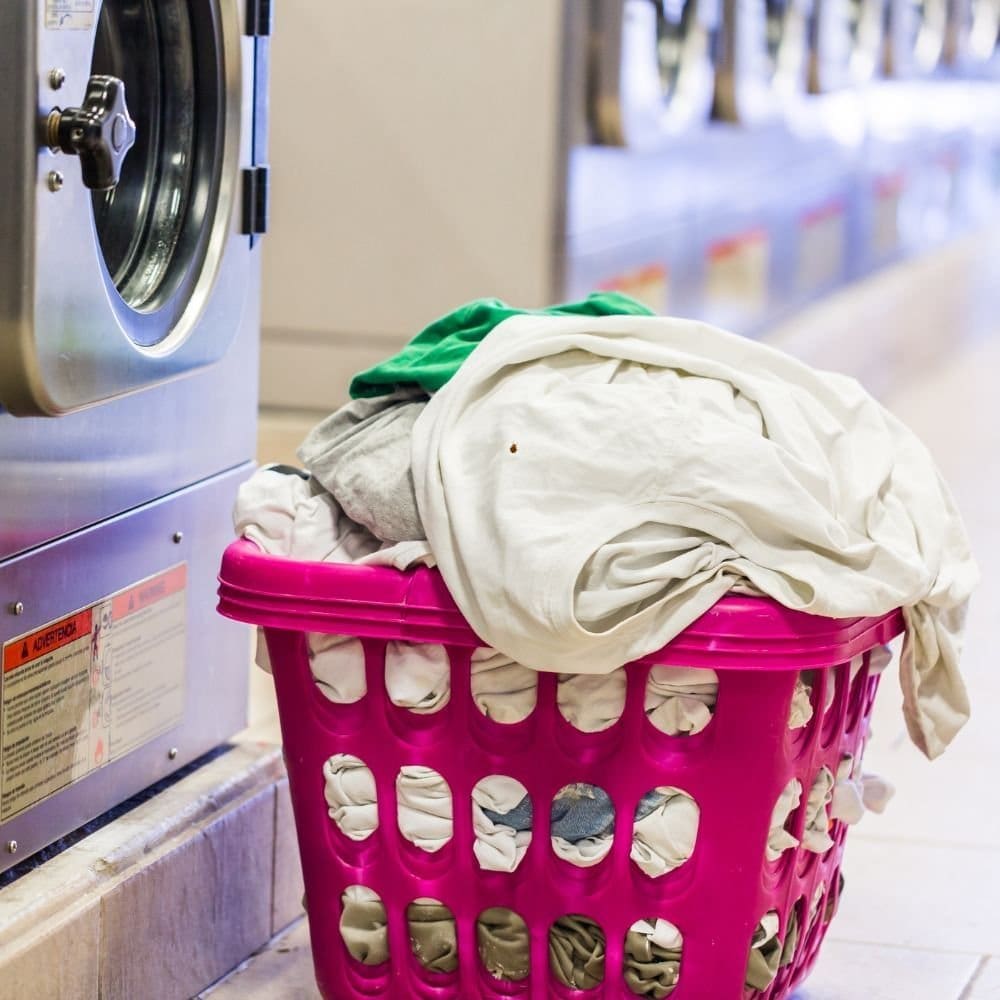How to Deal With Bed Bugs at the Laundromat or Dry Cleaners
By:
Updated:


Though the risk is relatively low, laundromats and dry cleaners are potential places where people can accidentally pick up bed bugs.
Is Your Laundry at Risk?
In metropolitan areas like New York City, bed bug issues occasionally crop up at laundromats or dry cleaners. Sometimes this is an accidental result of bed bugs sneaking into dirty laundry undetected, as bed bugs are known to be attracted to dirty laundry.1 Other times, customers bring their own bed bug-infested clothing to the laundromat to kill them, but without taking proper precautions.
While the risk of catching bed bugs in laundromats and drycleaners is not high, it should not be ignored either. Bed bugs can be unknowingly transferred to clean clothes and bags from communal carts, tables, and chairs.
So, how can you avoid picking up someone else’s bed bugs at these places? And if you already have a bed bug problem, what precautions should you take with your laundry to protect others?
Avoiding Bed Bugs at the Laundromat
According to the EPA: “Bed bugs can hitchhike from home to home through laundromats.” Being self-service by design, it is up to you to protect yourself at laundromats. Instead of using drop-off services, it’s best to do your laundry yourself to ensure every precaution is being taken.
Bed bugs can’t survive inside the machines, so the surrounding furniture (such as carts and seating areas) are the high-risk areas you should be wary of. While bed bugs generally prefer dirty clothes over clean ones, there’s still a chance one might crawl into your clean laundry while you’re folding or waiting. You can minimize the risk by taking these precautions:
Inspect Before Using
- Tables
- Seats
- Carts / trolleys
- Laundry baskets
- Dryers
Handling Laundry
- Transport dirty laundry in either sealed plastic bangs or cloth laundry bags. When using cloth bags, wash and dry them together with your clothes as an extra precaution.
- Once your clothes are dry, transfer them directly from the dryer into your bag.
- Take items out of the dryer individually for a quick visual check. Make sure to turn out pockets and inspect tags and seams.
- We recommend folding your laundry at home. But if you need to fold your laundry there, inspect the table and wipe it down with an alcohol wipe first.
- Avoid leaving bags and personal belongings on the floor or in seating areas.
Washing Bed-Bug Infested Clothes
When it comes to killing bed bugs, heat is your friend. The ideal temperature for killing bed bugs is 119 °F (48.3 °C), and 131 °F (54.8 °C) for their eggs.2 Slightly lower temperatures are also effective, ranging from 104–122 °F (40-50 °C), but require longer exposure times. For example, bed bug eggs can also be killed at 119 °F after continuous exposure for over an hour.
To ensure that your laundry is properly dis-infested:3
- Laundry should be placed in a large tumble drier on a hot cycle (reaching at least 104 °F or 40 °C) for at least 30 minutes.
- When washing clothes, a 30-minute wash cycle at 140 °F (60 °C) is guaranteed to kill 100% of bed bugs at all life stages.
While the laundromat is often a good option for dealing with infested laundry, you should take proper care to protect others from picking up your bed bugs.
- Bring your clothing to the laundromat in sealed plastic bags.
- Carefully load the contents directly into a washing machine. Never place infested clothing on tables, seats, or communal baskets.
- Wash and dry using the highest temperature settings that the fabric can withstand.
- Once dry, place your clothing in brand new plastic bags.
- Tie up the old plastic bag(s) and carefully dispose of them by bringing them to an outdoor bin.
Avoiding Bed Bugs at the Dry Cleaners
Dry cleaners have a unique advantage in dealing with bed bugs due to the high temperatures and chemical treatments involved in the cleaning process. Many dry cleaners are aware of potential bed bug problems and take special precautions to prevent them. Some even specialize in getting bed bugs and their eggs off clothing.
What Precautions Can You Take?
Because dry cleaning involves a combined series of treatments (heat and chemicals), it’s unlikely for bed bugs to survive and spread. However, it’s still possible for bed bugs to escape from infested laundry and end up infesting cleaned clothes. As an extra precaution:
- When bringing clothes home from the dry cleaners, place the bagged garments in a bathtub and conduct a quick visual inspection before moving them to your closet.
- Make sure to check folds, pockets, tags, and seams.
- Dispose of the paper hangers provided by the dry cleaners, and use your own wire or plastic hangers instead.
Does Dry Cleaning Kill Bed Bugs?
Overall, dry cleaning can be a very effective method for killing bed bugs in delicate and temperature sensitive fabrics. The most commonly used dry cleaning solvent, Perchloroethylene (“PERC”), is lethal to bed bugs at all life stages. Other solvents, such as hydrocarbons, are milder than PERC but can also kill bed bugs to a certain extent.
Aside from the solvent used, the drying process involves using heat to tumble clothes and evaporate solvent. Typically, these temperatures reach 120–150 °F (49–65 °C), and a cycle typically lasts 10-25 minutes, which is sufficient to kill bed bugs and their eggs.4
Conclusion
Bed bugs can be a frustrating and persistent problem, and laundromats and dry cleaners can be potential hotspots for their spread. While the risk is relatively low, taking precautions can significantly reduce your chances of bringing these unwanted pests home. By following guidelines for handling laundry, inspecting communal areas, and opting for high-temperature cleaning methods, you can protect yourself and your belongings from bed bug infestations.
If you have further questions, or need help with bed bugs, MMPC is here to help. We are an eco-friendly pest control company based in NYC with over 25 years of experience helping people inspect for, treat, and prevent bed bugs.

About the Author
References
- Hentley, W.T., Webster, B., Evison, S.E.F. et al. Bed bug aggregation on dirty laundry: a mechanism for passive dispersal. Sci Rep 7, 11668 (2017). https://doi.org/10.1038/s41598-017-11850-5 ↩︎
- Kells, S. A., & Goblirsch, M. J. (2011). Temperature and Time Requirements for Controlling Bed Bugs (Cimex lectularius) under Commercial Heat Treatment Conditions. Insects, 2(3), 412–422. https://doi.org/10.3390/insects2030412 ↩︎
- Naylor, R. A., & Boase, C. J. (2010). Practical solutions for treating laundry infested with Cimex lectularius (Hemiptera: Cimicidae). Journal of economic entomology, 103(1), 136–139. https://doi.org/10.1603/ec09288 ↩︎
- Miller, Ph.D, D. (n.d.). Using Heat to Kill Bed Bugs ]. Department of Entomology, Virginia Tech. Retrieved September 9, 2024, from https://www.vdacs.virginia.gov/pdf/bb-heat1.pdf ↩︎
